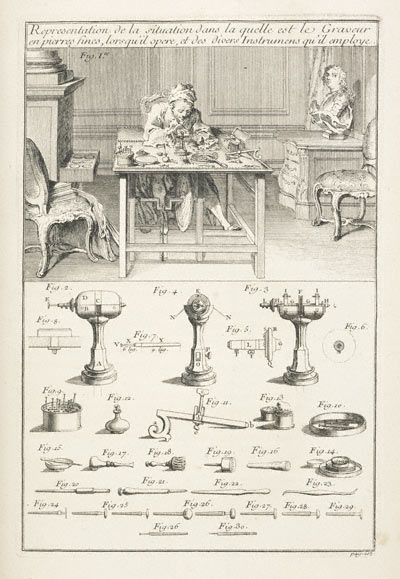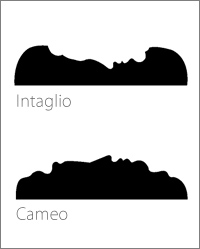|
Carving Tools
Although intaglios are concave and cameos are convex, both are produced in a similar fashion. A cutting tool dipped in a slurry of abrasive powder and oil is turned while a gemstone is manipulated against it. Cutters of different shapes and materials can be used—drills, wheels, cones, and balls made of copper, bronze, iron, or
something softer such as wood or even reed. It is the powder (emery or corundum in antiquity, diamond dust today) carried by the tool, not the tool itself, that actually carves the stone.
This engraving depicts an 18th-century carver along with a variety of cutting tools. The instruments used by ancient carvers were similar, being turned by a bow rather than a foot pedal.
Image right: An 18th-Century Gem Carver at Work, Pierre Soubeyran after Edmé Bouchardon, engraving in Pierre Jean Mariette, Traité des pierres gravées (Treatise on Engraved Gems), Paris, 1750. Research Library, The Getty Research Institute, 85-B16751
Image top right: Hermaphroditus Seated on an Altar (detail), possibly by Protarchos, 150–100 B.C. Sardonyx cameo set in a modern gold ring. The J. Paul Getty Museum, 2001.28.9
|
 |
 |


